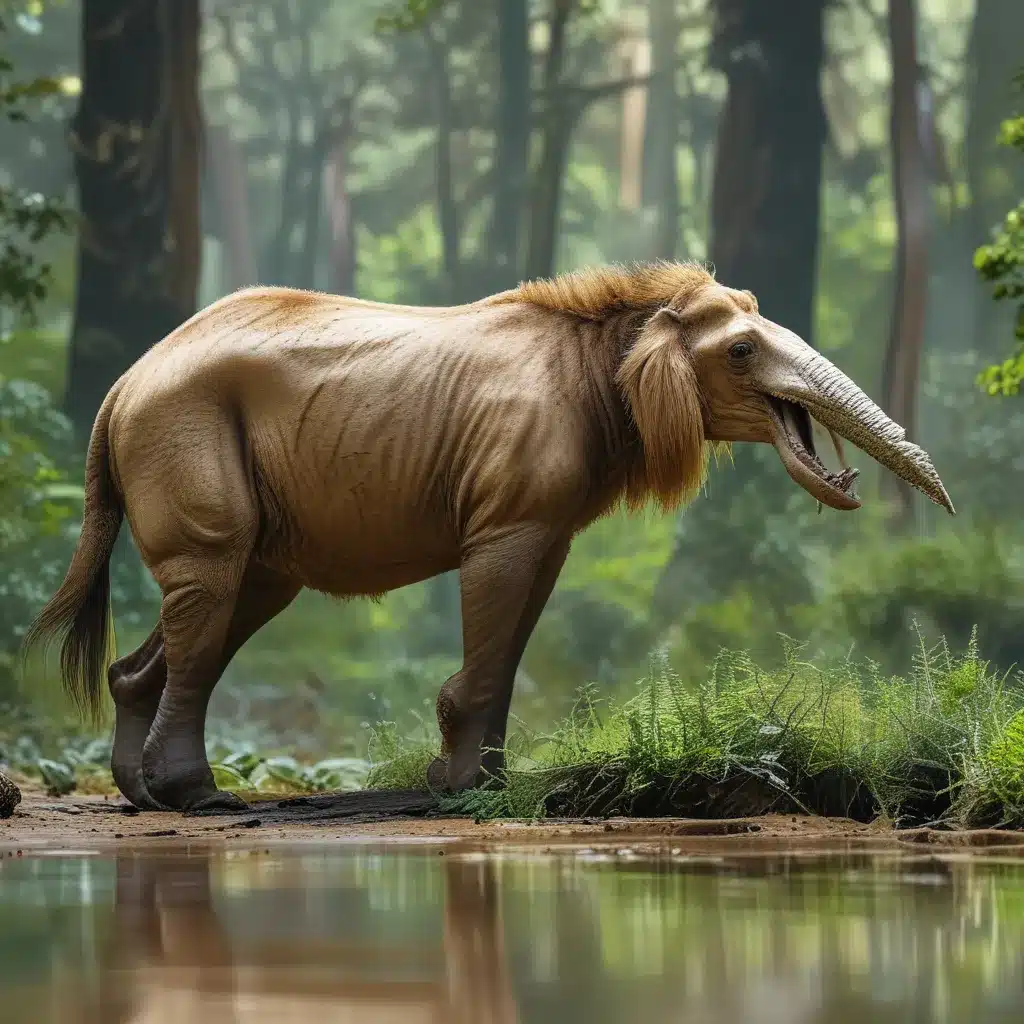
The Woolly Mammoth Reawakening: A Mammoth Undertaking?
It’s a sight straight out of a sci-fi blockbuster – herds of woolly mammoths roaming the tundra once more, their mighty tusks and shaggy coats a testament to the wonders of modern science. But is this ambitious plan to “de-extinct” these prehistoric giants really a good idea? As a curious onlooker, I can’t help but ponder the potential pitfalls and possibilities of bringing back the dead.
The team behind this mammoth endeavor (pun intended) is a company called Colossal, who claim they can resurrect the woolly mammoth within the next few years. Their plan involves taking DNA from frozen mammoth remains and inserting it into the cells of their closest living relative, the Asian elephant. In theory, this could result in a sort of mammoth-elephant hybrid, a Frankensteinian creation that would roam the Arctic once again.
Proponents of de-extinction argue that this could be a game-changer for conservation efforts. Mammoths were keystone species in the Arctic ecosystem, and their return could help restore the delicate balance of the tundra. By scraping away snow, they’d expose the frozen permafrost beneath, potentially reversing some of the climate change-induced warming that’s been plaguing the region.
The Mammoth in the Room: Potential Pitfalls
But not everyone is convinced that this is a good idea. Many experts point out that the resulting creature won’t be a true woolly mammoth, but rather a hybrid that could suffer from a host of health issues. There are also concerns about how such a large animal would fit into the delicate Arctic ecosystem, and whether it would truly have the same ecological impact as its extinct predecessor.
“They’d have to bring back millions of woolly mammoths, and it would take centuries for any positive changes to occur,” says Ross MacPhee, a biologist at the American Museum of Natural History. “And the other thing is, where are you going to put them? You’re not talking about rats – you’re talking about animals that weigh 4 or 5 tons.”
Moreover, the process of de-extinction is incredibly expensive, with estimates ranging in the tens of millions of dollars. Opponents argue that this money would be better spent on protecting currently endangered species, rather than resurrecting those that have been gone for millennia.
A Jurassic Park Scenario? The Ethical Quandaries of De-Extinction
The ethical questions surrounding de-extinction are complex and multifaceted. On one hand, the prospect of bringing back lost species is undeniably alluring, tapping into our innate sense of wonder and curiosity about the natural world. Just the thought of mammoths and passenger pigeons roaming the earth again is enough to give any nature enthusiast goosebumps.
But there’s also the nagging fear of unintended consequences, a Jurassic Park scenario where our meddling with the natural order of things leads to unforeseen and potentially disastrous outcomes. As the National Geographic article points out, introducing a new version of an extinct species into an ecosystem could wreak havoc on the delicate balance of its existing inhabitants.
And then there’s the question of whether we even have the right to play God in this way. Do we really possess the wisdom and foresight to make such monumental decisions about the future of life on our planet? It’s a sobering thought that gives me pause.
A Beacon of Hope or a False Promise?
Ultimately, I’m torn on the issue of de-extinction. Part of me is captivated by the sheer audacity and wonder of the idea, the prospect of breathing new life into species that have been gone for centuries. Imagine the joy and awe on the faces of future generations as they gaze upon a living, breathing woolly mammoth at their local zoo.
But the pragmatic side of me can’t help but worry about the unintended consequences, the potential for ecological disruption, and the eye-watering price tag. Perhaps the resources would be better spent on more proven and sustainable conservation efforts, protecting the endangered species we have left before they too disappear forever.
In the end, I suppose it comes down to how much risk we’re willing to accept in pursuit of such an ambitious and awe-inspiring goal. For now, I’ll be watching the progress of Colossal and their mammoth project with a mix of excitement and trepidation, eager to see if they can pull off this scientific miracle – or if it will all come crashing down like a prehistoric pachyderm.
One thing’s for certain: the debate over de-extinction is far from over. And as a curious observer, I can’t wait to see how it all plays out. Who knows, maybe one day I’ll get the chance to visit IT Fix and ask the experts there what they think about reviving the woolly mammoth. After all, if anyone knows about bringing the dead back to life, it’s the computer repair gurus.












